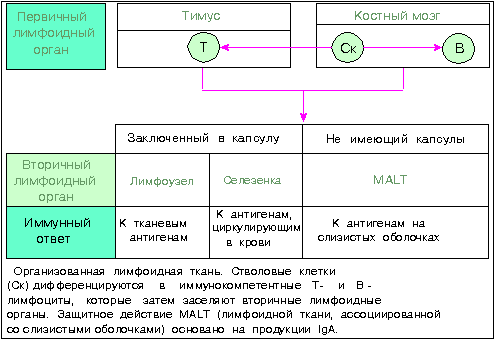Gene: [01p32/PPT] palmitoyl-protein thioesterase; ceroid-lipofuscinosis, neuronal 1 infantile (Haltia-Santavuori disease) (MIM:256730);
|
COM |
[1] An initial suggestion that a mutation in sterol carrier protein X
(see GEM:01p32/SCPRP) can be a cause of the
disease was not confirmed
in further studies by the same research group (Vesa-1994). Based
on results of a structural and expression analysis both of the coding
region and regulatory elements inside the SCPX/SCP2 gene, the authors
concluded that the latter can be excluded as a candidate gene for the
disease. A search for novel coding sequences within this 'relatively
poorly characterised target region' on Chr 1p should be continued in
order to identify the underlying molecular basis of INCL.
[2] The ceroid-lipofuscinosis is found in many domestic animals (dogs, sheep, and cows) which can serve as a model for study of this pathology (Goebel-1992). [3] Very recently, a novel gene underlying a similar clinical form of ceroid-lipofuscinosis, CLN3 or Batten-Vogt-Spielmeyer-Sjogren disease, was cloned, see below [GEM:01p32/PPT:HET]." |
|
PAT |
<* > [GENETIC EPIDEMIOLOGY]
[1] The disease was described as a member of so-called the 'Finnish group' of inherited diseases (for the definition, see Norio R &: Ann Clin Res, 5, 109-141, 1973). In this, genetically relatively isolated population, INCL has a prev- alence of 1:20,000. Inheritance: autosomal recessive. Age-of-onset: 8-18 months. Life expectancy: about 10 years. [2] Reviewing about 60 reported cases of Santavuori disease, Baumann RJ, Markesbery WR:1982 described the first cases in the USA: three cases in two unrelated families. One of the latter originated from Appalachian Kentucky. %--- <* > [MAJOR CLINICAL SIGNS] [1] PsychoNeurological: Mental retardation; Loss of speech; Psychomotor deterioration; Microcephaly; Minor motor seizures; Muscular hypotonia; Ataxia; Myoclonic jerks; Optic atrophy; Macular and retinal alterations (without pigment aggregation); Blindness in infancy (before 2 years of age). [2] Laboratory data: Brain cortex cytoarchitecture disarrangement; White matter degeneration with granular deposits resembling free and unsaturated fatty acids; Neuronal alterations with aggregations of changed (often binucleated) phagocytes and hypertrophic fibrillary astrocytes in the cerebral cortex; Serum arachidonic acid increasing while linoleic acid decreasing." |
|
HET |
<* > [HETEROGENEITY]
[1] The ceroid lipofuscinoses are a diverse group of inherited neurodegenerative disorders manifesting in the early age. The distinctive pathological abnormalities in the INCL-1 distinguish the latter form from other lysosomal storage diseases (Zeman-1969; Zeman-1974). The specific signs include brain atrophy and the presence of intracellular fluorescent 'lipopigment'. The storage pigment cytosomes have characteristic granular and lamellar ultrastructures. [2] Up to 10 clinical forms of the pathology have been described. Their current classification is not comprehensive. Three of the forms (including CLN1) have been assigned to particular chromosomes: juvenile amaurotic family idiocy, CLN3, to Chr 16p (GEM:16p121/CLN3), Finnish late infantile to Chr 13q (GEM:13q/CLN5) and late infantile variant to Chr 15q (GEM:15q2/CLN6). In addition, there are so called 'Reserved' items for two more variants of neuronal lipofuscinoses: classical late infantile (GEM:11p15/CLN2; Jansky-Bielschowsky disease) and adult type (GEM:00.0/CLN4; Kufs disease). See also GEM:00.0/CLN7. [3] Jokiaho et al. (Jokiaho-1990) excluded Chr 16p as a possible location for the CLN1 gene. This fact means that at least two clinical forms - the menmentioned juvenile CLN1 (Santavuori-Haltia disease) and CLN3 - are not allelic forms. Moreover, a novel gene underlying the CLN3 ceroid-lipofuscinosis was cloned, very recently, and shown to be disrupted by a 1 kb-genomic deletion in all patients carrying a particular haplotype (see The International Batten Disease Consortium, Cell, 82, N6 (Sep 22), 949-957, 1995; also see GEM:16p121/CLN3, or EMB U32680)" |
|
REF |
PHE,PAT,FOG "Baumann RJ, Markesbery WR: Neurology, 32, 1277-1281, 1982 PHE,PAT,FOG "Becker K &: Eur J Pediatr, 132, 197-206, 1979 MOD,PAT "Goebel HH: Am J Med Genet, 42, N4, 605-608, 1992 PHE,PAT,FOG "Hagberg B &: Acta Paediatr, 63, 753-763, 1974 HIS,IDN,PHE "Hagberg B &: Acta Paediatr Scand, 57, 495-499, 1968 HIS,IDN,PHE "Haltia M &: J Neurol Sci, 18, 269-285, 1973 LOC,LIN "Hellsten E &: Genomics, 16, N3 (Jun), 720-725, 1993 LOC,LIN "Jarvela I &: CCG, 58 (HGM11), N1-4, 1856-1857, 1991a LOC,LIN "Jarvela I &: Genomics, 9, N1 (Jan), 170-173, 1991b LIN,HET "Jokiaho I &: Genomics, 8, N2 (Oct), 391-393, 1990 MOD,PAT "Jolly &: Am J Med Genet, 42, N4, 609-614, 1992 PHE,PAT,FOG "Santavuori P &: Dev Med Child Neurol, 16, 644-653, 1974 HIS,IDN,PHE "Santavuori P &: J Neurol Sci, 18, 257-267, 1973 CLO,SEQ,STR "Schriner JE &: Genomics, 34, 317-322, 1996 MOD,PAT "Taylor &: Am J Med Genet, 42, N4, 622-627, 1992 MUT "Vesa J &: Nature, 376, 584-587, 1995 COM,IDN "Vesa J &: Hum Mol Genet, 3, N2 (Feb), 341-346, 1994 PAT,SYS "Zeman W: J Neuropath Exp Neurol, 33, 1-12, 1974 PAT,SYS "Zeman W, Dyken P: Pediatrics, 44, 570-583, 1969 |
|
KEY |
neu, lip |
|
CLA |
coding, basic |
|
LOC |
01 p32 |
|
MIM |
MIM: 600722 |
|
EZN |
ENZYME: 3.1.2.21 |
Смотрите также:

